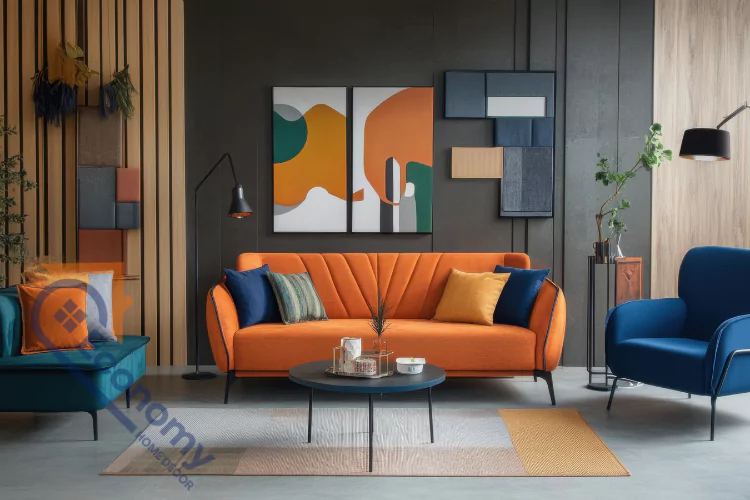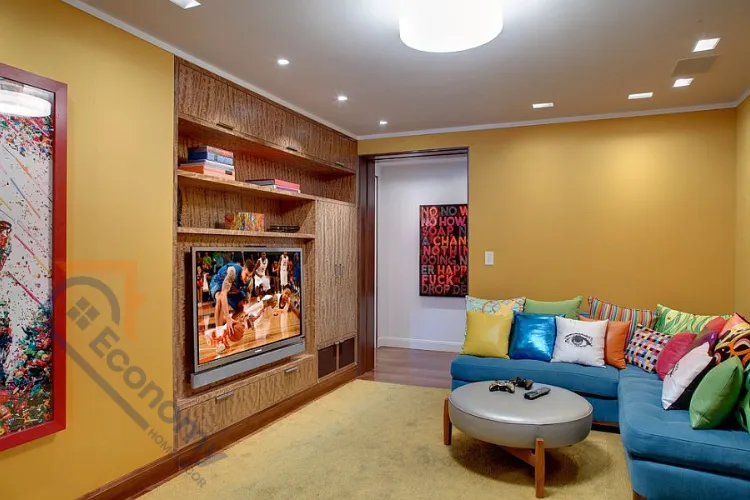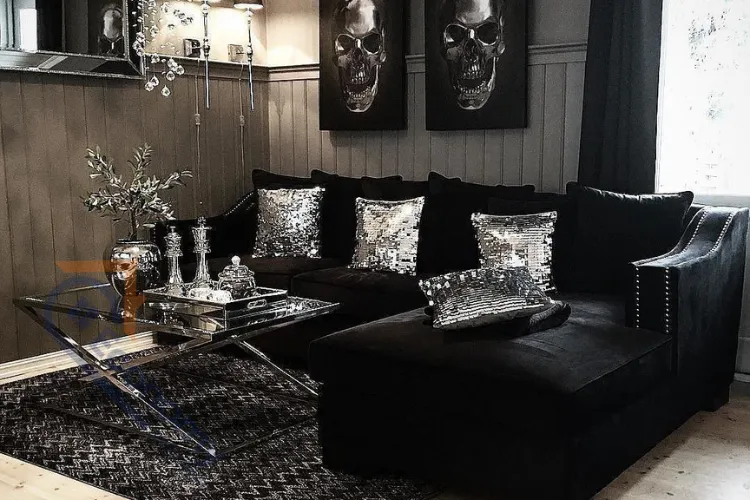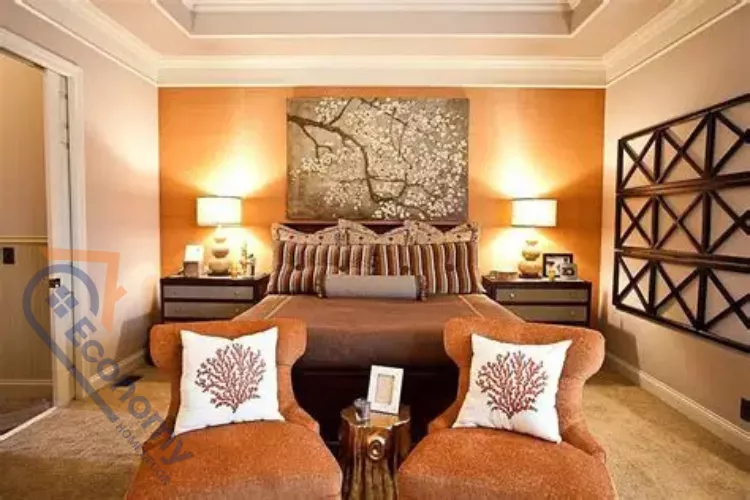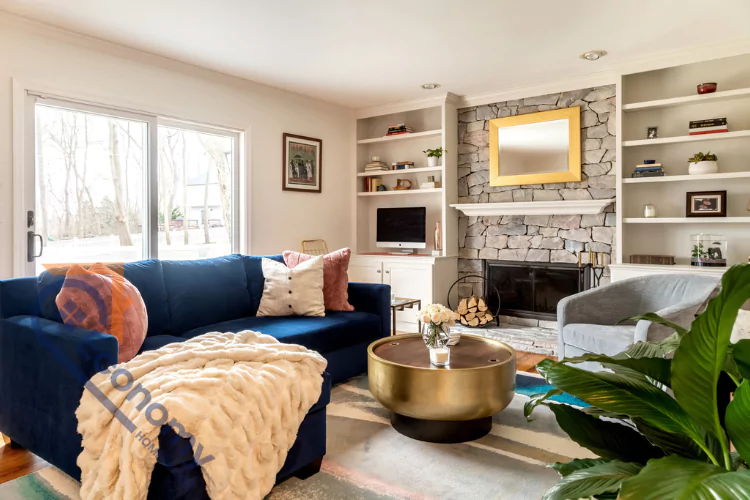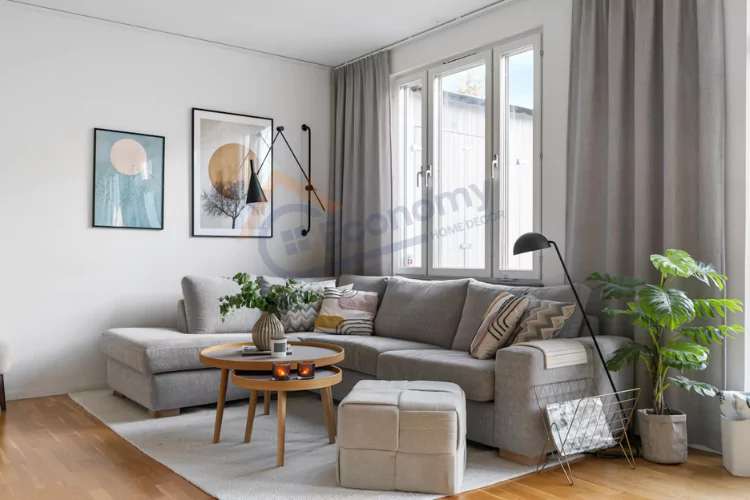Struggling with a narrow living room that feels cramped and uncomfortable? You’re not alone! Many homeowners face the challenge of making long, narrow spaces feel welcoming and functional. The good news is that with the right narrow living room decorating ideas, you can transform your challenging space into a stylish and comfortable haven that feels much larger than it actually is.
Whether you’re dealing with an apartment layout, a converted space, or just an awkwardly shaped room, there are proven strategies that interior designers use to maximize every inch. From clever furniture arrangements to optical illusions that widen your space, these genius tricks will help you create the perfect balance of style and functionality in your narrow living room.
Understanding Your Narrow Living Room Layout
Before diving into specific decorating ideas for narrow living room spaces, it’s essential to understand what you’re working with. A narrow living room typically has a length-to-width ratio that creates challenges for furniture placement and traffic flow. These spaces often feel like bowling alleys or corridors rather than cozy gathering areas.
The key to success lies in identifying your room’s specific characteristics. Measure the length and width of your space, note where windows and doors are located, and observe how natural light enters the room throughout the day. Understanding these elements will help you make informed decisions about which long narrow living room decorating ideas will work best for your specific situation.
Consider the room’s primary functions too. Will this be a space for entertaining guests, watching TV, reading, or a combination of activities? Your lifestyle needs should drive your decorating decisions. Some narrow rooms work better as conversation areas, while others are perfect for media rooms or home offices. By understanding both your space’s limitations and your personal needs, you’ll be better equipped to implement effective small narrow living room decorating ideas.
Don’t forget to assess your room’s architectural features. High ceilings can be an advantage in narrow spaces, while low ceilings might require different strategies. Built-in features, fireplaces, or structural elements can either be obstacles or opportunities, depending on how you approach them.
Strategic Furniture Placement
The foundation of successful decorating ideas for long narrow living room spaces starts with smart furniture placement. Instead of pushing all furniture against the walls, which actually makes narrow rooms feel more corridor-like, try creating distinct zones within your space. This approach breaks up the length and creates the illusion of width.
Start by placing your largest piece of furniture, typically a sofa, at an angle or perpendicular to the longest wall. This immediately disrupts the tunnel effect and creates a more interesting layout. Consider floating furniture in the center of the room to create pathways on both sides, which helps the space feel more open and accessible.
Create conversation areas by grouping furniture together rather than spreading pieces throughout the room. A loveseat facing a couple of chairs with a coffee table in between creates an intimate seating area that doesn’t require the entire length of the room. This leaves space for other activities or additional seating areas.
Multi-functional furniture is your best friend in narrow spaces. Ottoman storage benches can serve as coffee tables, extra seating, and storage solutions. Nesting tables can be pulled out when needed and tucked away when not in use. Console tables behind sofas provide surface space without taking up floor area.
Color Schemes That Expand Space
Color psychology plays a crucial role in long narrow living room decor ideas. Light colors reflect more light and create the illusion of spaciousness, making them ideal for narrow rooms. However, this doesn’t mean you’re limited to stark white walls. Soft, pale colors like light gray, warm beige, or gentle pastels can make your space feel larger while still adding personality.
Consider using a monochromatic color scheme throughout your narrow living room. When walls, furniture, and accessories share similar tones, the eye doesn’t stop at defined boundaries, creating a seamless flow that makes the space feel more expansive. This technique is particularly effective in small narrow living room decorating ideas.
Don’t be afraid to use darker colors strategically. A single accent wall at the far end of a narrow room can actually make the space feel wider by drawing the eye and creating depth. Rich, deep colors like navy blue or forest green on the end wall can make that wall appear closer, balancing the room’s proportions.
Cool colors like blues and greens tend to recede, making walls appear farther away, while warm colors like reds and oranges can make spaces feel more intimate but potentially smaller. Use this knowledge strategically – cool colors on the long walls and warmer accents on the shorter end walls can help balance proportions.
Lighting Solutions for Narrow Spaces
Proper lighting is essential when implementing decorating ideas for a narrow living room. Poor lighting can make narrow spaces feel even more cramped and unwelcoming. Layer different types of lighting throughout your space to create depth and eliminate dark corners that make rooms feel smaller.
Start with ambient lighting as your base layer. Instead of relying on a single overhead fixture, use multiple light sources distributed throughout the room. Table lamps at different heights, floor lamps in corners, and wall sconces can provide even illumination that makes the space feel more open and inviting.
Task lighting serves specific functions while adding visual interest. Reading lamps beside seating areas, under-cabinet lighting on shelving units, or picture lights on artwork create focused illumination that highlights different zones within your narrow living room. This approach supports the zoning strategy discussed earlier.
Accent lighting adds drama and personality to your space. LED strip lights behind floating shelves, rope lights along the ceiling perimeter, or uplighting from floor lamps bounced off the ceiling can create interesting visual effects that draw attention upward and away from the room’s narrow proportions.
| Lighting Type | Best Placement | Effect on Space |
|---|---|---|
| Ambient | Multiple sources throughout | Creates even, open feeling |
| Task | Near seating/work areas | Defines functional zones |
| Accent | Behind shelves, artwork | Adds depth and interest |
| Natural | Maximize window exposure | Makes space feel larger |
Mirror Magic: Creating Illusion of Width
Mirrors are among the most powerful tools in narrow living room decor ideas. A well-placed mirror can instantly double the apparent size of your space by reflecting light and creating the illusion of depth. The key is strategic placement and choosing the right size and style for maximum impact.
Large mirrors work best in narrow spaces. A single oversized mirror on one of the long walls can create the dramatic illusion of width, making your room feel significantly more spacious. Position mirrors across from windows when possible to reflect natural light and outdoor views, which adds both brightness and the sense of extended space.
Multiple mirrors can also be effective, but they require careful consideration. A gallery wall of mirrors in various sizes and shapes can create visual interest while still expanding the space. However, avoid placing mirrors directly opposite each other, as this can create an unsettling infinite reflection effect in narrow rooms.
Consider mirrored furniture and accessories as subtle ways to incorporate reflective surfaces. Mirrored coffee tables, side tables, or cabinet doors can add sparkle and light without the commitment of wall-mounted mirrors. These pieces are particularly effective in decorating idea for narrow living room applications where you want to maintain flexibility.
The frame style of your mirrors should complement your overall design aesthetic. Ornate frames can add personality and serve as artwork, while sleek, frameless mirrors create a more modern, seamless look that maximizes the space-expanding effect.
Vertical Design Elements
When working with decorating ideas for long narrow rooms, thinking vertically is crucial for creating balance and visual interest. Draw the eye upward to counteract the horizontal emphasis of your narrow space. This strategy makes rooms feel taller and more proportioned.
Floor-to-ceiling curtains are one of the most effective ways to add vertical emphasis. Hang curtain rods as close to the ceiling as possible and choose panels that reach the floor. This creates unbroken vertical lines that make both walls and ceilings appear higher. Choose light-colored or sheer fabrics to maintain the sense of openness.
Tall furniture pieces can also help balance narrow proportions. Bookcases, armoires, or tall plant stands draw attention upward and provide valuable storage without consuming much floor space. However, be mindful not to overcrowd your space with too many tall pieces, which could make the room feel cluttered.
Vertical artwork arrangements work better than horizontal ones in narrow spaces. A tall, narrow painting or a series of artworks arranged in a vertical column creates the illusion of height. Gallery walls that extend from floor to ceiling can turn an entire wall into a vertical focal point.
Consider architectural details that emphasize height. Wainscoting with vertical panels, painted stripes running from floor to ceiling, or even strategically placed vertical molding can add visual interest while supporting your vertical design theme.
Multi-Functional Furniture Solutions
Smart furniture choices are essential when implementing ideas to decorate a long narrow living room. Every piece should earn its place by serving multiple purposes or fitting perfectly into your space constraints. Multi-functional furniture maximizes utility while minimizing clutter.
Storage ottomans are perfect examples of dual-purpose furniture. They provide comfortable seating for guests, serve as coffee tables when topped with a tray, and offer hidden storage for blankets, magazines, or seasonal items. Choose ottomans on casters for easy movement and flexibility in your narrow space.
Expandable dining tables work beautifully in narrow living rooms that also serve as dining areas. Console tables that extend into full dining tables save space when not in use but accommodate dinner parties when needed. This flexibility is crucial in small narrow living room decorating ideas.
Built-in solutions, while requiring more investment, offer the best space efficiency. Custom banquette seating along one wall provides comfortable seating while incorporating storage underneath. Built-in entertainment centers eliminate the need for bulky standalone units while providing ample storage and display space.
Furniture with legs or raised elements helps maintain the sense of openness by allowing visual flow underneath. Sofas with exposed legs, glass-top tables, and floating nightstands keep sight lines clear and prevent your narrow room from feeling heavy or cluttered.
Wall Decor That Doesn’t Overwhelm
Choosing appropriate wall decor for decorating wall ideas living room narrow wall applications requires careful consideration of scale and placement. The goal is to add personality and visual interest without making your narrow space feel cluttered or closed in.
Large-scale artwork often works better than collections of small pieces in narrow rooms. A single substantial painting or photograph can serve as a focal point without creating visual chaos. Choose pieces that complement your color scheme and add to the sense of space rather than competing with it.
Floating shelves offer display opportunities without the bulk of traditional furniture. Install them at varying heights to create visual interest and use them to display books, plants, and decorative objects. Keep displays edited and change them seasonally to maintain freshness.
Textured wall treatments can add depth and interest without requiring floor space. Grasscloth wallpaper, wood paneling, or even paint techniques like color washing can create visual texture that makes walls more interesting without overwhelming narrow proportions.
Consider the traffic flow when placing wall decor. Artwork should be positioned where it can be appreciated without interfering with movement through the space. This is particularly important in narrow rooms where every inch of walkway matters.
Creating Zones in Long Spaces
One of the most effective long narrow living room decorating ideas involves breaking up the length by creating distinct functional zones. This approach makes a narrow room feel like several connected spaces rather than one long corridor, improving both functionality and visual appeal.
Start by identifying the different activities your living room needs to accommodate. Common zones might include a conversation area, entertainment zone, reading nook, or workspace. Each zone should have a clear purpose and the furniture arrangement should support that function.
Use area rugs to define different zones visually. A large rug under your main seating area creates a conversation zone, while a smaller rug under a reading chair establishes that as a separate space. Choose rugs in coordinating colors and patterns to maintain visual flow between zones.
Lighting helps reinforce your zoning strategy. Each area should have appropriate task and ambient lighting that serves its function while contributing to the overall room illumination. A reading zone might have a floor lamp, while the entertainment area could feature wall sconces or table lamps.
Room dividers can create zones without completely blocking sight lines. Open bookcases, decorative screens, or even large plants can suggest separation while maintaining the sense of openness essential in narrow spaces.
Floor-to-Ceiling Solutions
Maximizing vertical space is crucial when working with home decorating ideas for long narrow living rooms. Floor-to-ceiling solutions make the most of your available square footage while drawing the eye upward to balance narrow proportions.
Built-in bookcases that extend from floor to ceiling provide enormous storage capacity without consuming much floor space. These installations can house books, decorative objects, and even concealed storage baskets. Paint them the same color as your walls to minimize their visual impact while maximizing their function.
Floor-to-ceiling curtains create the illusion of height while controlling natural light and privacy. Choose curtain panels that are 20% longer than the distance from rod to floor, allowing them to pool slightly for an elegant look. This technique works well in both traditional and contemporary narrow living room decor ideas.
Tall storage cabinets can house electronics, books, games, and other living room necessities without the footprint of traditional entertainment centers. Look for pieces that are 80 inches or taller to take full advantage of your vertical space.
Consider installing picture ledges at various heights along your walls. These narrow shelves can display artwork, photos, and small decorative objects while taking up minimal space. The ability to change displays easily keeps your narrow living room feeling fresh and personalized.
Strategic Color Blocking
Color blocking is an advanced technique in decorating a narrow living room ideas that can dramatically improve the proportions of your space. By using color strategically on different walls, you can create the illusion of width and balance in narrow rooms.
Paint the shorter end walls in slightly darker or warmer colors than the longer side walls. This technique makes the end walls appear closer, effectively “shortening” the room visually and making it feel more square and balanced. The contrast doesn’t need to be dramatic – even subtle differences can be effective.
Consider painting the ceiling a lighter shade than your walls to add height to your space. A ceiling that’s one or two shades lighter than wall color creates the illusion of height without the stark contrast of pure white, which can feel cold in narrow spaces.
Accent walls can serve multiple purposes in narrow rooms. A feature wall at one end of the room creates a focal point that draws attention away from the room’s length. Use wallpaper, a bold paint color, or even wood paneling to create this focal point.
Horizontal color blocking can also work well in certain narrow spaces. Painting the lower half of walls in a darker color and the upper half in a lighter shade can make ceilings appear higher while adding visual interest that doesn’t emphasize the room’s length.
Maximizing Natural Light
Natural light is your best friend when implementing small narrow living room decorating ideas. Light makes spaces feel larger and more welcoming, so maximizing whatever natural light you have is crucial for success.
Window treatments should enhance rather than block natural light. Sheer curtains, light-filtering cellular shades, or even bare windows (where privacy allows) let maximum light into your space. If privacy is a concern, consider bottom-up shades that cover lower portions of windows while leaving upper areas clear.
Keep window sills and surrounding areas clear of bulky decorations or furniture that might block light flow. A few small plants or a single decorative object can add interest without impeding illumination.
Light-colored window treatments reflect more light into your room than dark fabrics. White, cream, or pale colors in your curtains or blinds will bounce light around your narrow space, making it feel more open and airy.
Consider installing skylights or additional windows if major renovation is possible. While this represents a significant investment, the transformation in how your narrow space feels can be dramatic. Even small changes like enlarging existing windows can have substantial impact.
Furniture Scale and Proportion
Selecting furniture with appropriate scale is one of the most important aspects of decorating ideas for narrow living room success. Pieces that are too large overwhelm narrow spaces, while pieces that are too small can make rooms feel choppy and uncomfortable.
Choose furniture with clean lines and minimal visual bulk. Pieces with legs allow sight lines to flow underneath, maintaining the sense of openness crucial in narrow rooms. Avoid overstuffed furniture or pieces with extensive decorative details that can make spaces feel cluttered.
The “floating” furniture concept works particularly well in narrow spaces. Instead of pushing all furniture against walls, float key pieces like sofas or chairs in the space. This creates circulation paths on multiple sides and prevents the room from feeling like a hallway lined with furniture.
Scale your coffee table appropriately to your seating. In narrow rooms, a coffee table that’s too large can impede traffic flow, while one that’s too small won’t provide adequate surface area. Consider oval or round coffee tables, which offer better traffic flow than rectangular options.
Think about sight lines when arranging furniture. You should be able to see from one end of your narrow room to the other without major obstructions. This visual continuity helps the space feel more open and connected.
Smart Storage Solutions
Storage is always a challenge in narrow spaces, making creative storage solutions essential for long narrow sunroom decorating ideas kitchen living room applications and similar spaces. The key is to incorporate storage in ways that don’t add visual clutter or consume valuable floor space.
Under-seating storage maximizes functionality without requiring additional floor space. Storage benches, ottomans with storage, or even sofas with built-in storage compartments keep necessities accessible while maintaining clean sight lines.
Wall-mounted storage keeps floor space clear while providing necessary storage capacity. Floating shelves, wall-mounted cabinets, or even pegboard systems can organize belongings without the bulk of freestanding furniture.
Hidden storage solutions work particularly well in narrow spaces. Coffee tables with storage, end tables with drawers, or entertainment centers with concealed compartments keep necessities accessible while maintaining the clean, uncluttered look essential in narrow rooms.
Vertical storage solutions make the most of your available space. Tall, narrow bookcases or storage towers provide substantial storage capacity with minimal floor footprint. These pieces also contribute to the vertical emphasis that helps balance narrow room proportions.
Key Takeaways
Successfully decorating narrow living rooms requires a combination of strategic planning, smart furniture choices, and clever design tricks. The most effective narrow living room decorating ideas focus on creating visual width, maximizing vertical space, and maintaining clear sight lines throughout the room.
Remember that light colors, mirrors, and proper lighting work together to make spaces feel larger and more welcoming. Multi-functional furniture and creative storage solutions help you maximize utility without sacrificing style. Creating distinct zones within your narrow space makes it feel more dynamic and functional.
Most importantly, don’t try to fight your room’s narrow proportions – embrace them and work with them strategically. With the right approach, your narrow living room can become a stylish, comfortable space that feels much larger than its actual dimensions.
Frequently Asked Questions
What’s the best furniture arrangement for a narrow living room?
Float your largest piece of furniture (usually the sofa) perpendicular to the longest wall or at an angle to break up the tunnel effect. Create distinct zones rather than lining all furniture against the walls.
Should I use dark colors in a narrow living room?
Light colors generally work better, but you can use dark colors strategically. Consider a dark accent wall at one end to create depth, while keeping the long walls light to maintain the sense of width.
How can I make my narrow living room feel wider?
Use large mirrors on long walls, choose light colors, ensure good lighting throughout, and avoid pushing all furniture against walls. Horizontal elements like low furniture and horizontal artwork can also help.
What size rug should I use in a narrow living room?
Choose rugs that define specific zones rather than trying to cover the entire narrow floor. Multiple smaller rugs often work better than one long runner, which can emphasize the room’s narrow proportions.
Is it better to have multiple light sources or one central light fixture?
Multiple light sources work much better in narrow spaces. Distribute lighting throughout the room with table lamps, floor lamps, and wall sconces to eliminate dark corners and create a more open feeling.
Conclusion
Transforming a narrow living room from challenging space to comfortable haven is entirely achievable with the right decorating ideas for narrow living room applications. The 15 genius tricks outlined in this guide provide a comprehensive approach to maximizing your space’s potential while creating a stylish, functional environment.
Success comes from understanding your space’s unique characteristics and working with them rather than against them. By implementing strategic furniture placement, using color and lighting effectively, and incorporating space-expanding elements like mirrors and vertical design features, you can dramatically improve how your narrow living room looks and feels.
Remember that small changes can have big impacts in narrow spaces. Start with one or two strategies that appeal to you most, and gradually incorporate additional elements as you become more comfortable with your space’s transformation. With patience and creativity, your narrow living room can become the welcoming, stylish space you’ve always wanted.


